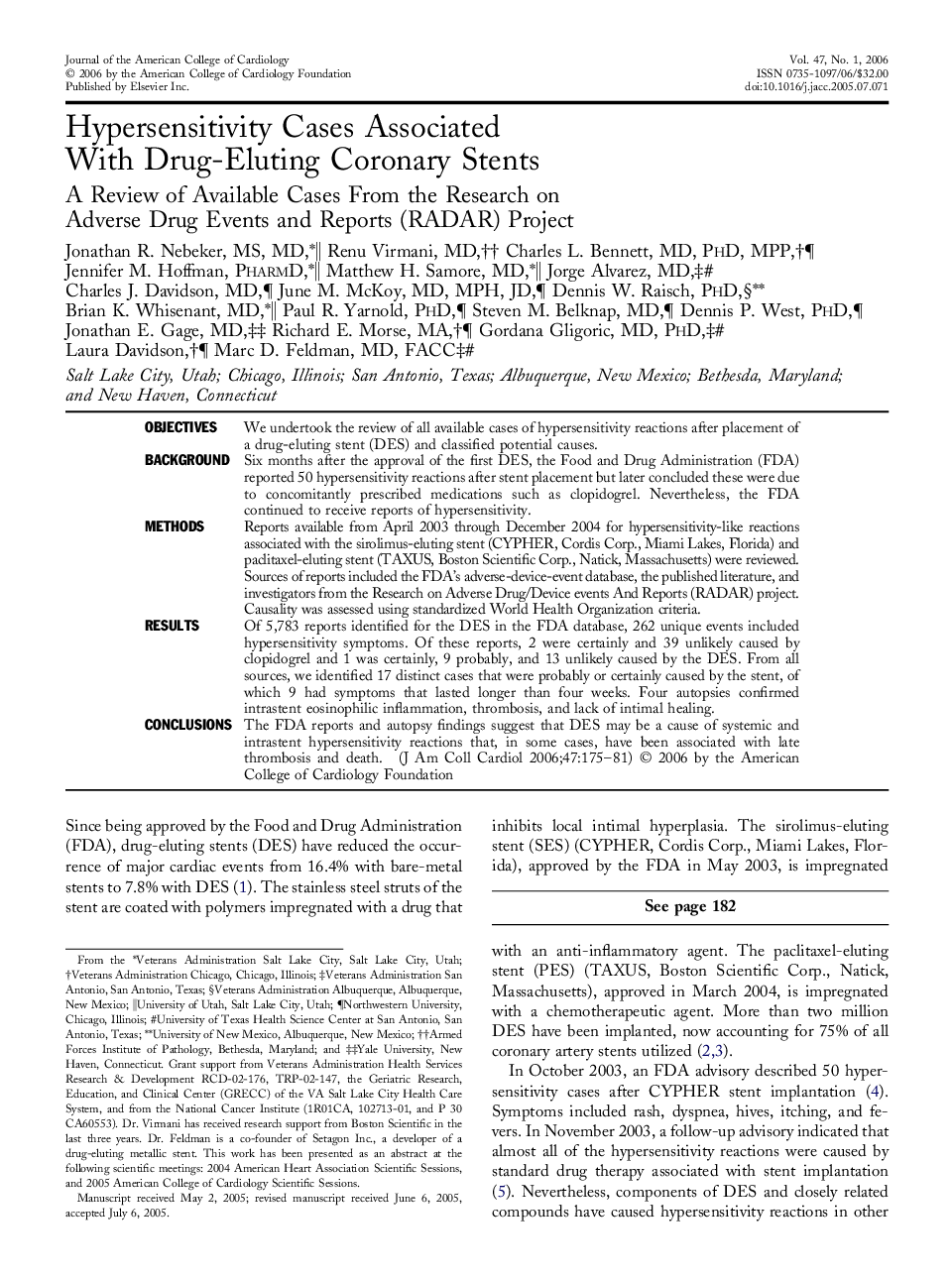| کد مقاله | کد نشریه | سال انتشار | مقاله انگلیسی | نسخه تمام متن |
|---|---|---|---|---|
| 2952567 | 1577525 | 2006 | 7 صفحه PDF | دانلود رایگان |

ObjectivesWe undertook the review of all available cases of hypersensitivity reactions after placement of a drug-eluting stent (DES) and classified potential causes.BackgroundSix months after the approval of the first DES, the Food and Drug Administration (FDA) reported 50 hypersensitivity reactions after stent placement but later concluded these were due to concomitantly prescribed medications such as clopidogrel. Nevertheless, the FDA continued to receive reports of hypersensitivity.MethodsReports available from April 2003 through December 2004 for hypersensitivity-like reactions associated with the sirolimus-eluting stent (CYPHER, Cordis Corp., Miami Lakes, Florida) and paclitaxel-eluting stent (TAXUS, Boston Scientific Corp., Natick, Massachusetts) were reviewed. Sources of reports included the FDA’s adverse-device-event database, the published literature, and investigators from the Research on Adverse Drug/Device events And Reports (RADAR) project. Causality was assessed using standardized World Health Organization criteria.ResultsOf 5,783 reports identified for the DES in the FDA database, 262 unique events included hypersensitivity symptoms. Of these reports, 2 were certainly and 39 unlikely caused by clopidogrel and 1 was certainly, 9 probably, and 13 unlikely caused by the DES. From all sources, we identified 17 distinct cases that were probably or certainly caused by the stent, of which 9 had symptoms that lasted longer than four weeks. Four autopsies confirmed intrastent eosinophilic inflammation, thrombosis, and lack of intimal healing.ConclusionsThe FDA reports and autopsy findings suggest that DES may be a cause of systemic and intrastent hypersensitivity reactions that, in some cases, have been associated with late thrombosis and death.
Journal: Journal of the American College of Cardiology - Volume 47, Issue 1, 3 January 2006, Pages 175–181